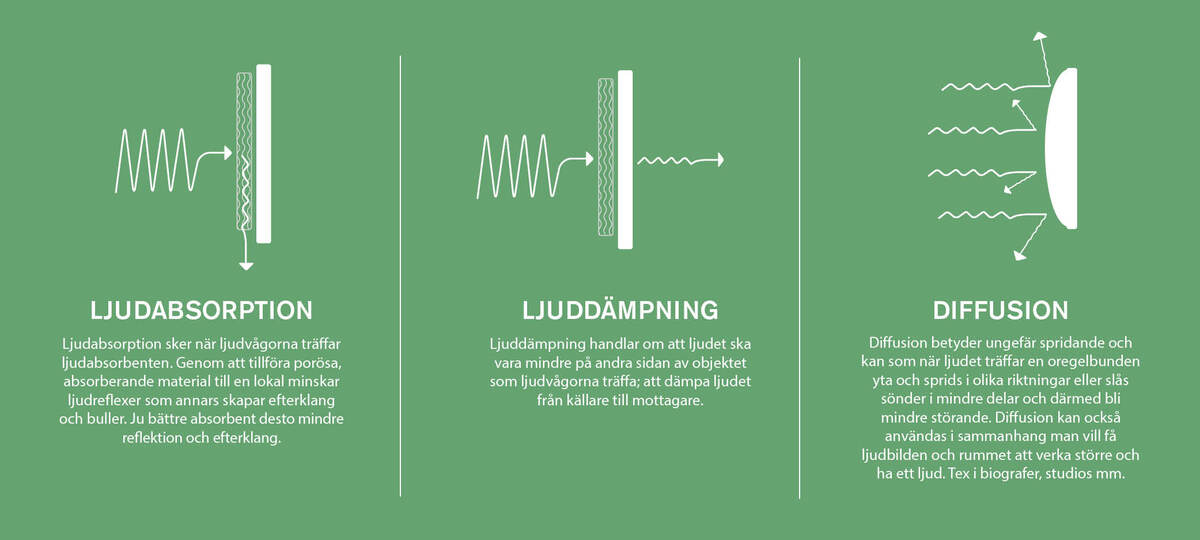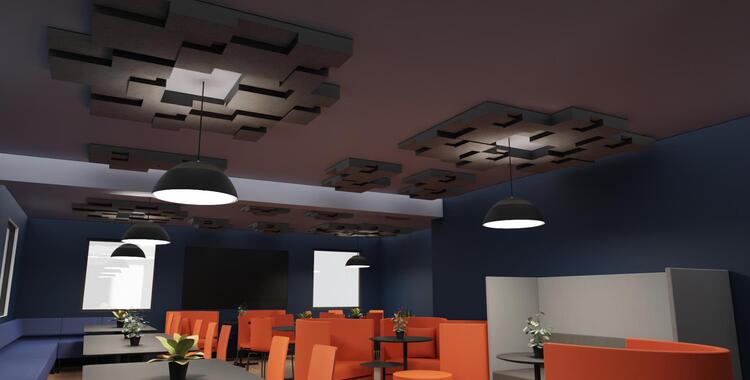
AM Acoustic explains
ACOUSTIC - How it´s work
Sound is defined as pressure propagation in an elastic medium. Usually air. There is a sound source and a receiver (the ear). Simply explained, when someone talks, leaves rustle, a phone rings, or something else creates a sound, vibrations travel through the air. We call those vibrations sound waves. The sound waves are picked up by our ears, processed and converted into information.
REVERSAL TIME
Reverberation time is simply explained as a measure of how much "echo" there is in a room. If you have a sound source and turn it off, it will not be absolutely silent immediately. It is due to reflections in the surfaces in a room and that the sound therefore lives longer in the room even though the direct sound from the sound source has died down. The time it takes for the sound to disappear is called reverberation time. Reverberation time is measured in how fast the sound falls. How long it is depends on several factors. The size of the room and thus total air volume and reflective surface as well as the absorption factor in the various reflective surfaces. The higher the absorption in a material, the less reflections back into the room and thus shorter reverberation time.
There are several ways to intercept and stop the sound waves. Below are described three different ways that we often talk about when it comes to acoustics.


SPEECH COMPREHENSIBILITY
- To hear and to be heard
In rooms with long reverberation or generally poor acoustics, it becomes significantly more difficult to understand what is being said and thus also more stressful to speak. You may recognize it from when you sat in a restaurant and heard all the sounds around you except what your company is saying.
Speech intelligibility depends on the consonants in speech being clear because they contain 90% of all information. Low frequencies (vowels) always drown out/mask high frequencies (consonants) and are therefore important to absorb. To dampen low frequencies around 500 Hz, at least 40 mm thick sound absorbers are required.
Our speech consists of vowels and consonants
- Vocals: low frequency (long waves/bass down), around 500 Hz.
- Consonants: high frequencies (short waves/high tones).
- Lower frequencies are stronger and stay in the room longer.
